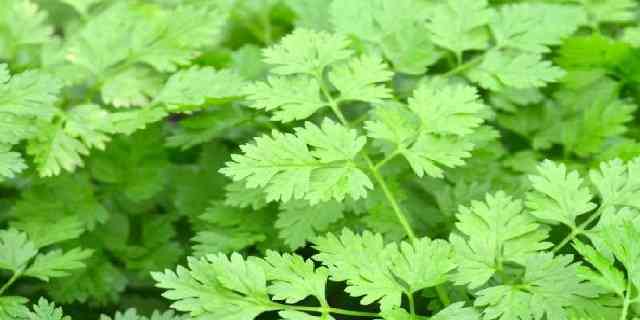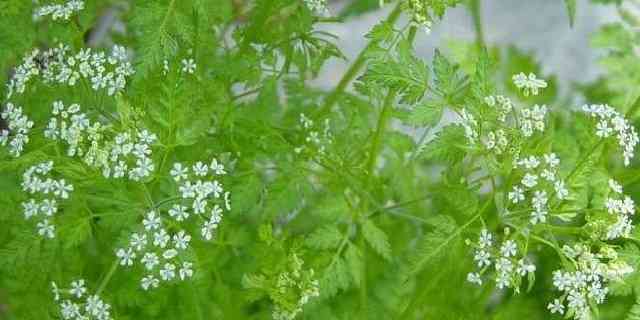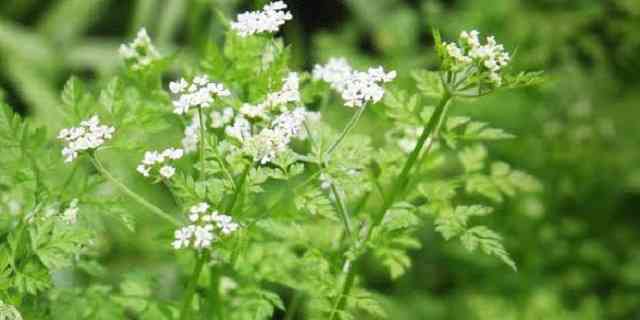How to Grow Chervil
Chervil has been a medicinal and culinary herb for centuries. Chervil seeds were found in Tutankhamun’s tomb and, Romans were fond of it and in medieval times it was regarded as the “finest salade herbe”, even being listed as an essential ingredient in 15th century manuscripts. Chervil provides a ready source of Vitamin C, so there is an added bonus to keeping a supply during winter.
Chervil is a hardy annual that grows about 25cm high. Despite its fragile appearance chervil prefers cooler weather because it tends to bolt (seed) when the weather is warmer. In winter plant chervil in a sheltered sunny area and water regularly to keep the soil moist, but not sodden. Chervil makes a fine window box plant and forms an attractive bushy plant that can also be used as a border to a herb garden.

Medicinal properties
This herb plant is a good source of Vitamin C, the leaves have a mild digestive action and an infusion of fresh leaves can settle the stomach. make an infusion to bring relief to a head cold. In Europe chervil is used as a spring tonic that lifts the spirits.
Culinary uses
Chervil looks alot like parsley and i prefer to use it as an alternative to parsley. The taste is more distinctive than parsley with a slight hint of aniseed. It brings out the flavor of other herbs and the classic French combination, fines herbes, combines chervil and parsley, tarragon and chives, this is a combination i personally use whenever in the kitchen. On its own it adds fragrance to cream-based soups, butter sauces, scrambled eggs or omelettes. Its best added at the end of the cooking process to keep its flavor. Of course the herb is best used fresh as it does not dry well like most leafy herbs.
This tall perennial plant belongs to the carrot family –we’ve all seen it in hedgerows where it gores to 3 feet tall and has frothy finely cut leaves, hollow furrowed stems, and heads of delicate white flowers.
Cow parsley is often called Devil’s parsley, this may be because it has a close resemblance to hemlock, which is a highly poisonous white flower closely linked with witchcraft. Cow parsley is one of the three or four plants described as ‘breaking your mother’s heart’, and while we don’t know quite why this saying came about, it could be because the tiny white blossoms drop quickly and in the days when mothers had to clean carpets by and the temptation to outlaw these blossoms from the house was understandable. Its cultivated version – chervil – enhances the flavours of other herbs when used together, famously in fines herbes, the French blend of at least three herbs, ground fine, where one herb is always chervil.

Cultivation
Maintaining a supply of fresh chervil is a doddle whether from young plants available in autumn or from seed. If you sow it in short drills in the late summer – when it will germinate quickly and make mounds of green ferny foliage that can be harvested all winter. The good news is that once you have chervil established it will self-seed and you will be able to harvest it year round, often it is at its best in winter just when you need it for salads, potato soups, and chervil sauce. A small warning – if you have a rural garden you may have several chervil relatives such as cow parsley seeding around – cow parsley is fine, but other relatives may be poisonous. Be sure you know which you are picking!
Parts used
Fresh or dried leaves.
Uses
Apart from the many, already discussed, culinary uses, cow parsley and its cultivated cousin chervil are both made into tisanes and infusions. The tea is used to treat water retention, stomach upsets and some forms of skin eruption and it said to promote wound healing. Chervil water is prepared commercially and used for babies as a constituent of gripe treatments.
